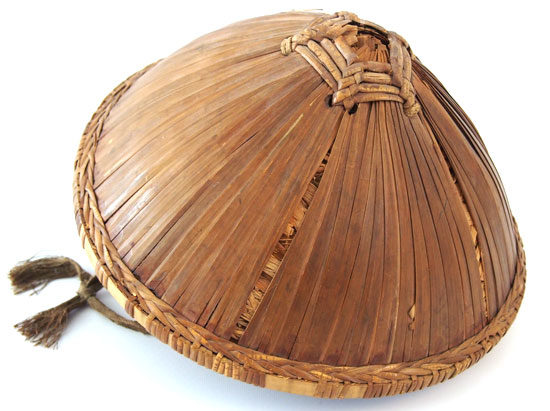
We’ve previously covered the origins and evolution of the conical hats of Asia – noting that these were used in China, Japan, Vietnam and even the Philippines. In past articles we’ve also explored how these were used by colonial military forces, including the Hong Kong Police under British rule.
One other important use of these wicker/straw hats/helmets was during the Qing Dynasty in the 19th century and even early 20th century when these were used in its Imperial Army. These were the de facto headdress for the Imperial Chinese Army Infantry until it took on a more western influenced appearance.
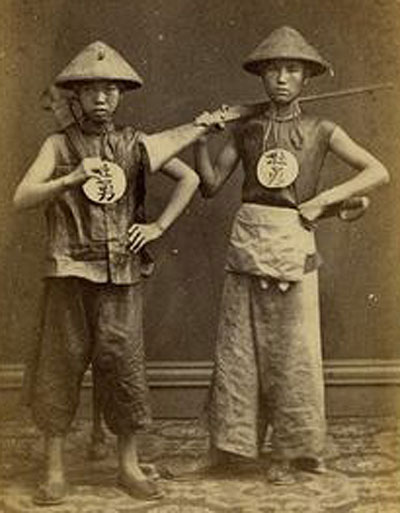
Late 19th century Imperial Chinese Army infantry during the decline of the Qing Dynasty.
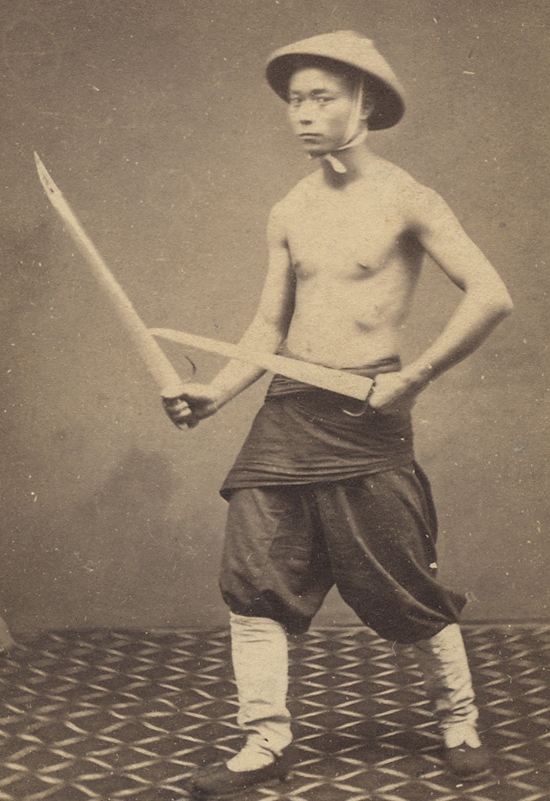
A Qing Dynasty era soldier – he is armed with the so-called “Butterfly Sword,” which featured two symmetrical blades.
This style of hat was used by Imperial Chinese Army forces in the Taiping Rebellion, the First Sino-Japanese War and the Boxer Rebellion.
This particular style of conical hat could accurately be called a “helmet” as it is produced in a way that would provide some protection from blows the head. It is constructed via a weave pattern that provides strength and rigidity – unlike other conical hats that merely provide protection from the sun and weather. In this regard it is close in design and structure to the salacots of the Philippines.
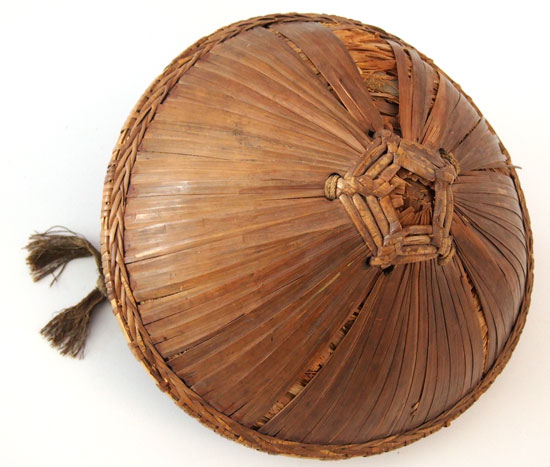
A top view of the Qing Dynasty era hat/helmet. This example has seen some use and has some wear, but the damage also highlights how these featured multiple levels of straw-like material that provided some rigidity to the hat. (Author’s Collection)
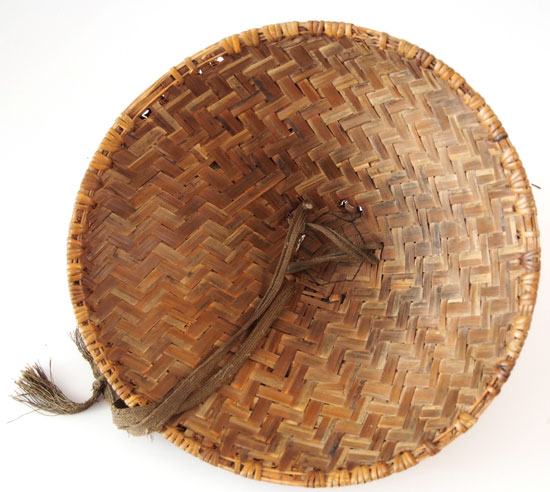
The view of the interior shows that this helmet featured a “haring-bone” pattern weave, which no doubt provided some strength. While the primary purpose was likely protection from the sun and weather, this helmet would provide limited protection against blows to the head as well. (Author’s Collection)
As China suffered under a brutal civil war, invasion during World War II and then the so-called “cultural revolution” few of these rare and unique hats/helmets have sadly survived. These remain an interesting item from the late Qing Dynasty as it sought to maintain its independence from outside invasions by clinging too much to the past.
Peter Suciu
November 2016
